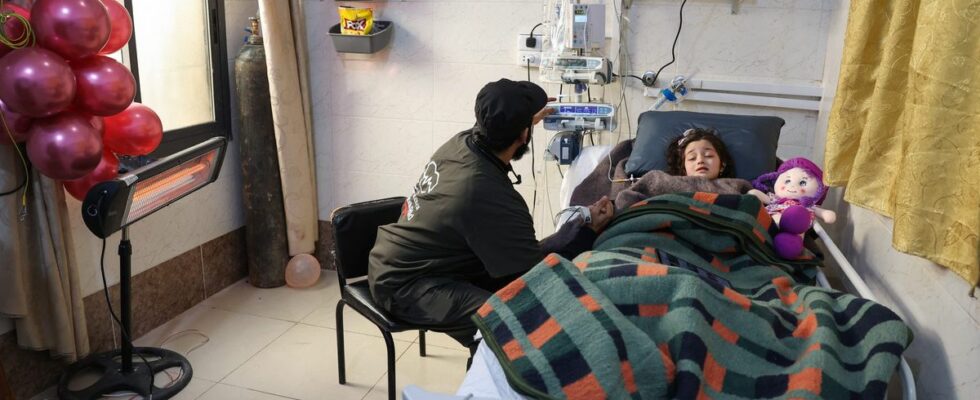It had taken six hours to extract it from the ruins. A 9-year-old Syrian girl, Cham, rescued after being trapped for forty hours under the rubble after the earthquakes and whose rescue video had gone viral, is at risk of having her legs amputated. “She is at risk of having her legs amputated” after being stuck under concrete slabs for 40 hours, Tarek Moustafa, an orthopedic surgeon at a hospital in Idleb, told AFP. “Help me,” implores Cham, lying on her hospital bed, a doll by her side.
The amputation operation has been postponed, but she is still recovering in a hospital in Idlib, says the doctor, who works at a hospital run by the Syrian American Medical Society (SAMS). “Cham is one of many patients with the syndrome who have flocked to hospitals in the region,” according to the doctor.
The “Buried Syndrome”
Like many survivors of the February 6 earthquake that killed more than 45,000 people in Syria and Turkey, Cham al-Sheikh Mohammad suffers from traumatic rhabdomyolysis, or “burial syndrome”. Potentially fatal, this syndrome can lead to the amputation of a limb, damage to the kidneys or cause cardiac complications.
The little girl had been buried under the rubble of her home in Armanaz, in northwestern Syria. In the video posted online by the White Helmets, the rescue workers who work in rebel areas in Syria, we hear them joking with the girl to give her courage. She hums with them a song dedicated to the Syrian capital, Damascus (Cham in Arabic), whose name she bears, or asks them for water.
At least 100 people affected, mostly children
The health department in the rebel- and jihadist-held city of Idleb has identified at least 100 patients with buried syndrome in the area, many of them suffering from kidney failure. Most are children traumatized by the tragedy, which left some of them orphans. Their limbs were compressed for more than 12 hours, which blocked blood circulation.
Often, the patient complains only of pain in the limbs, unaware that he is at risk of developing life-threatening heart and kidney problems later on. “It’s what we call ‘the smile of death’”, explains Tarek Moustafa.

